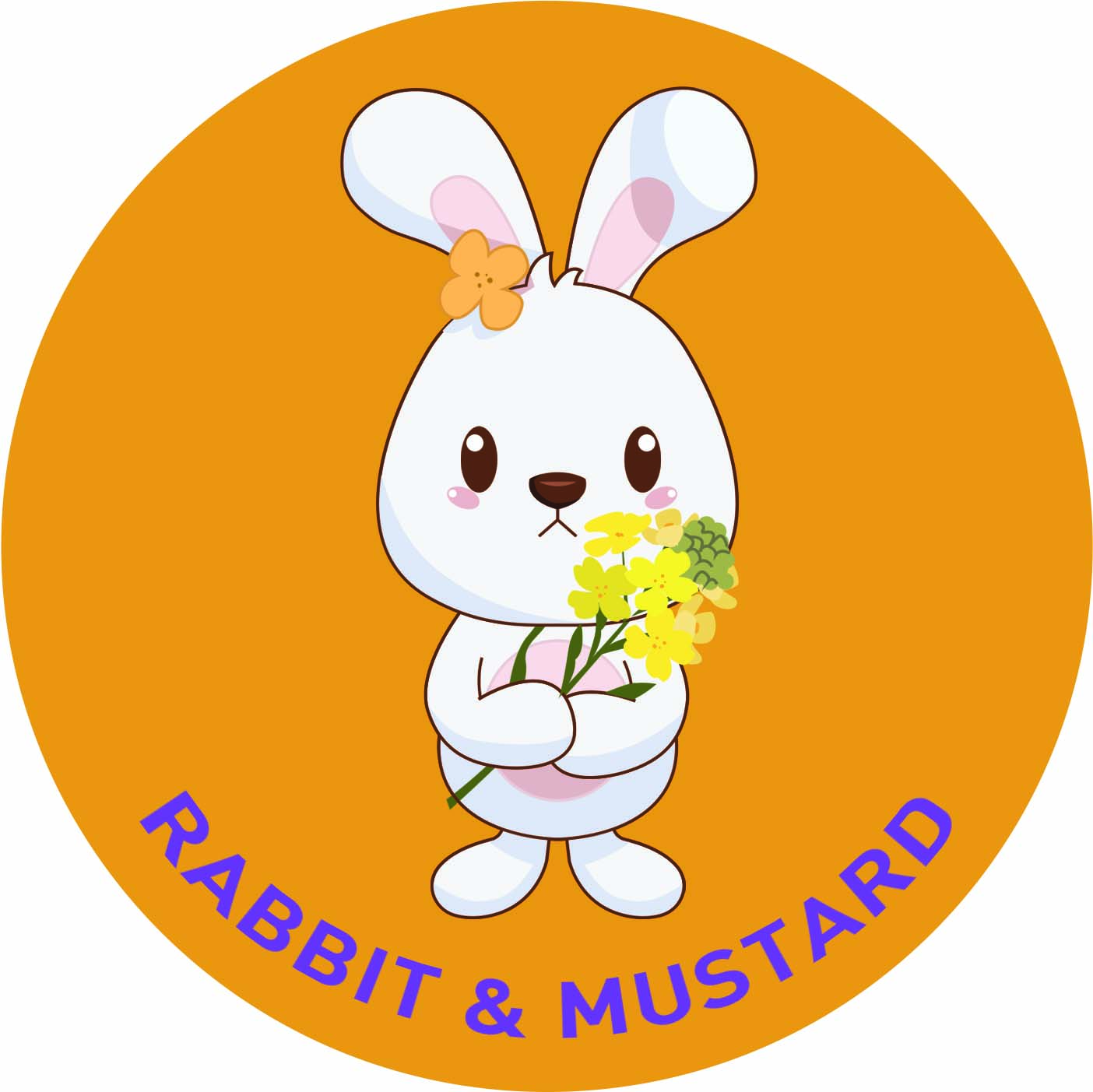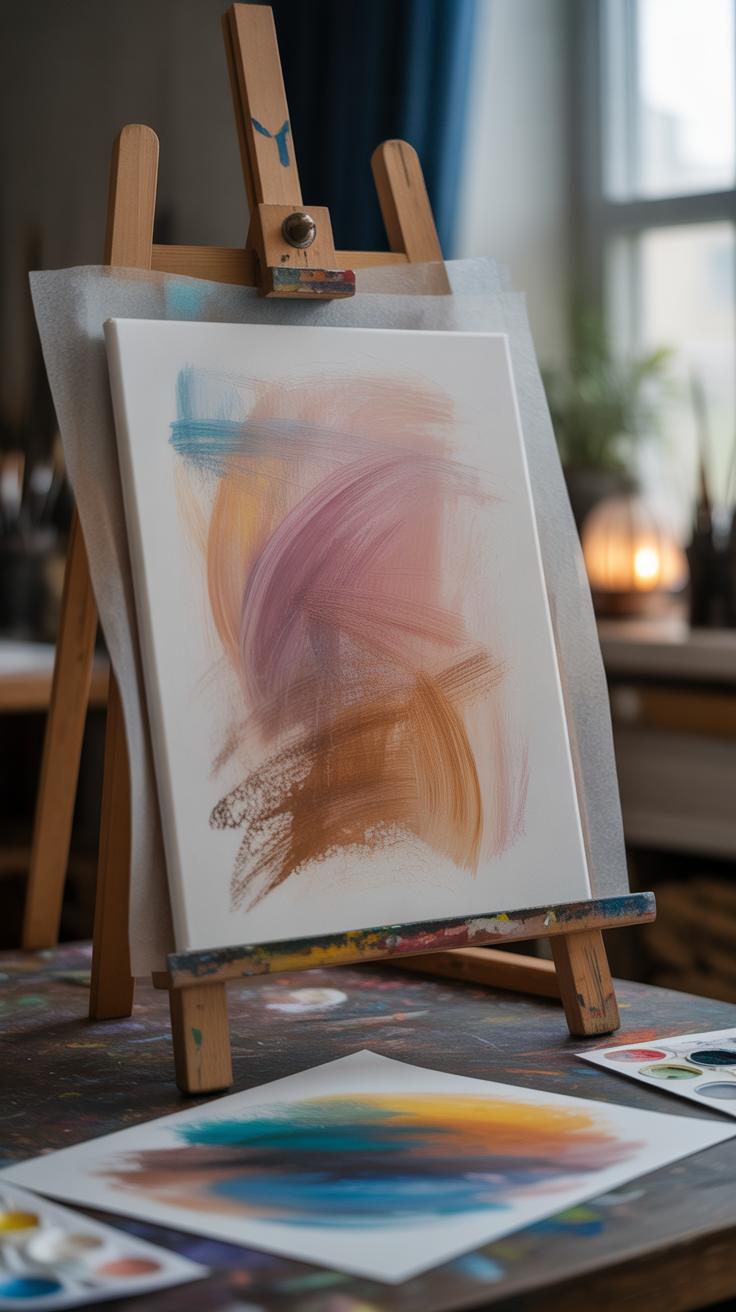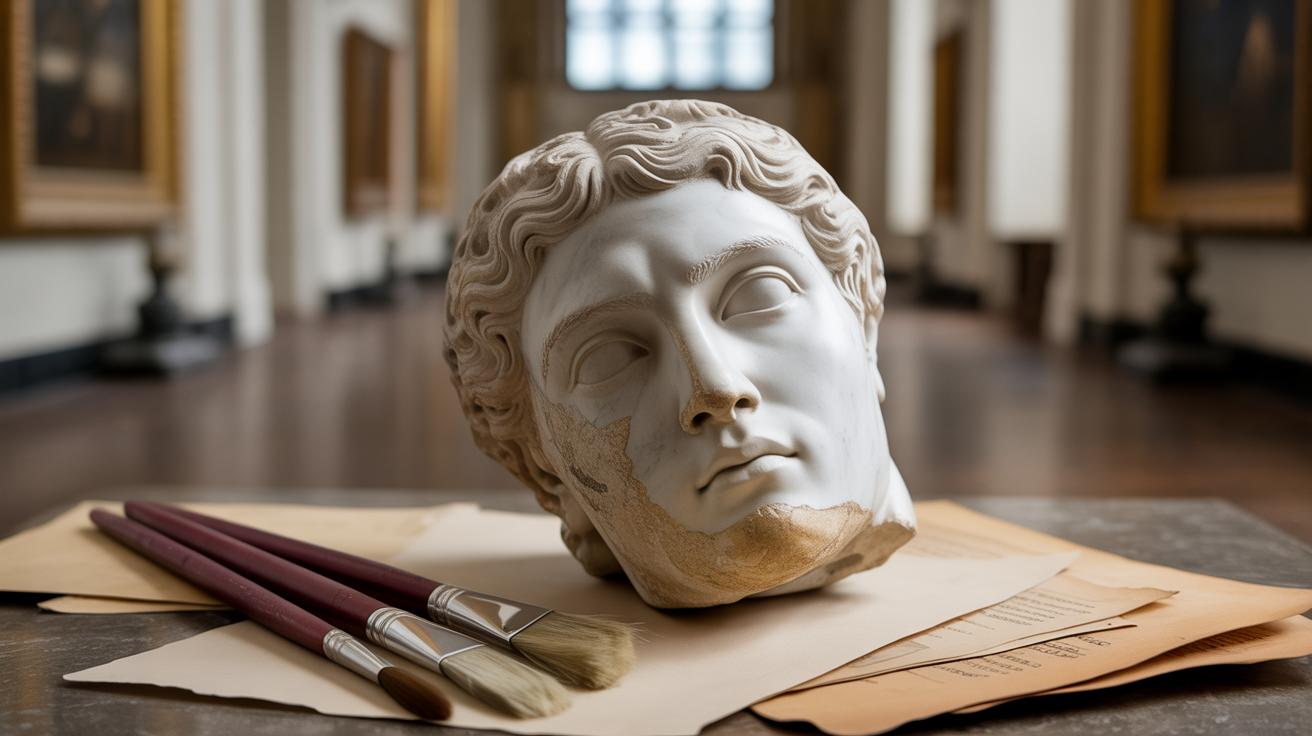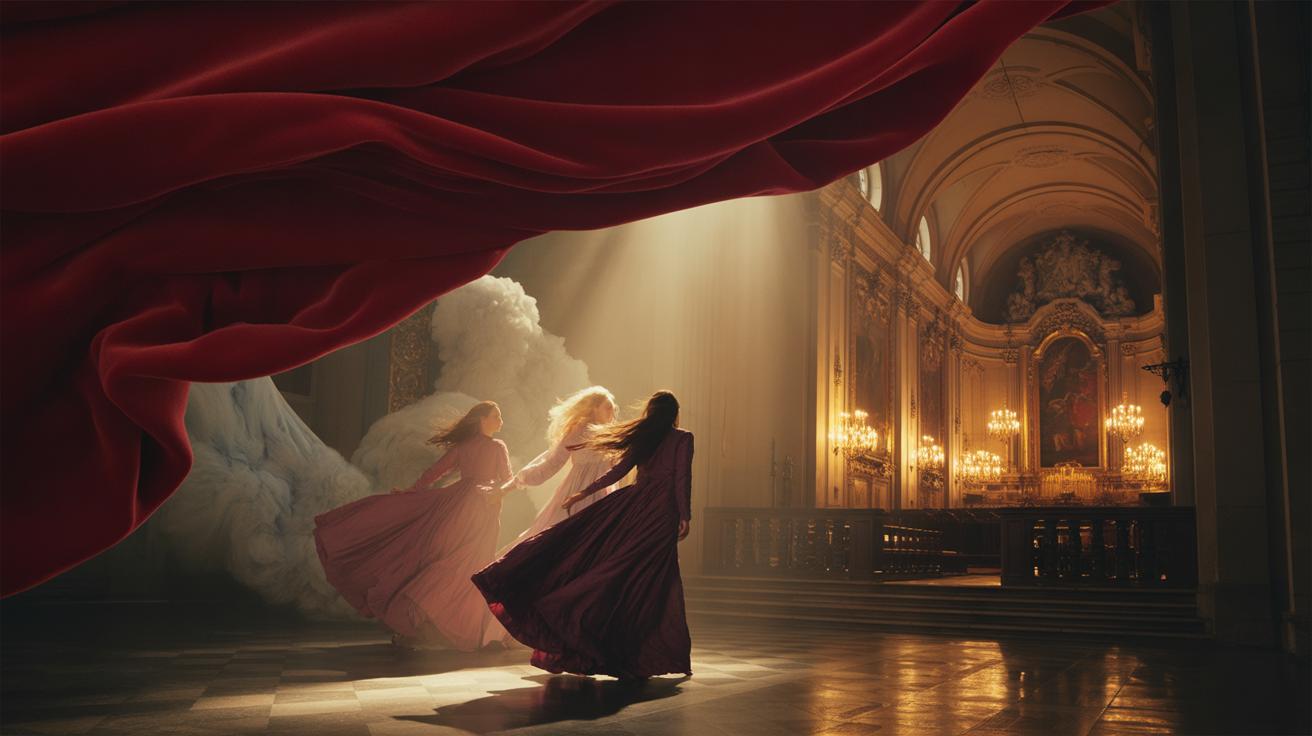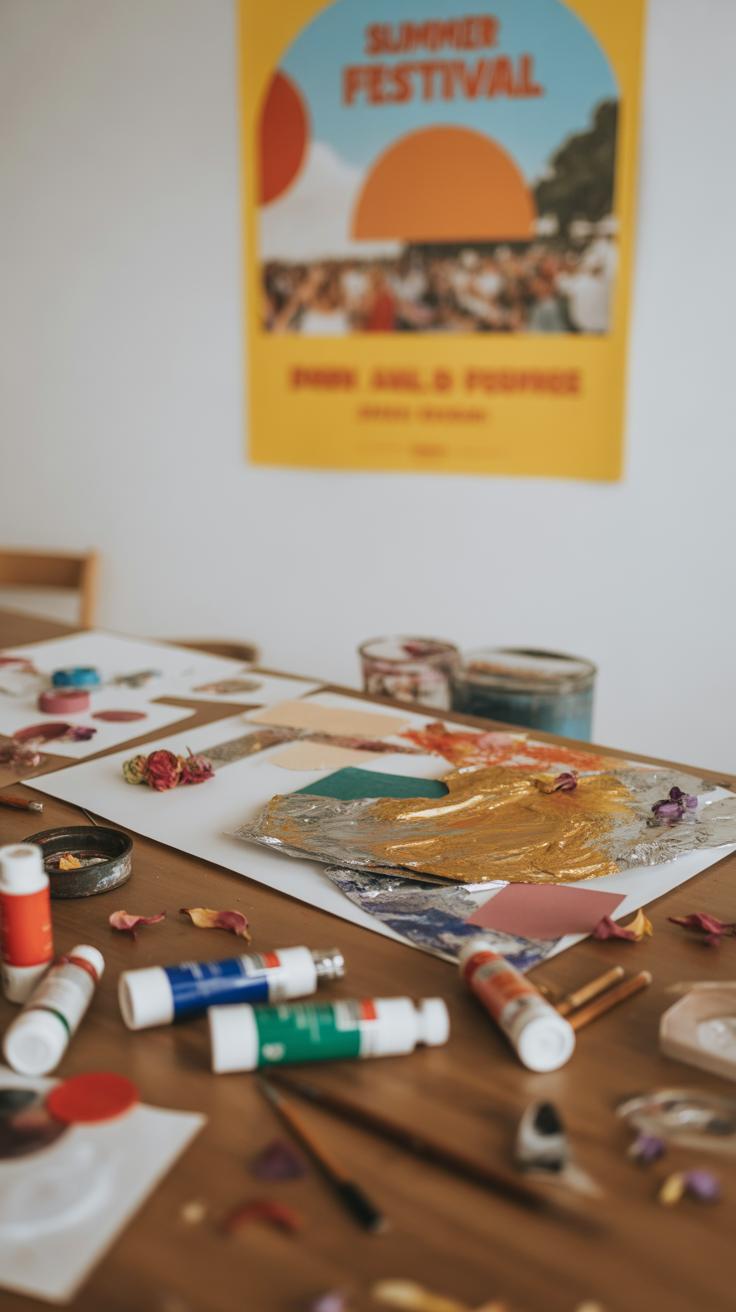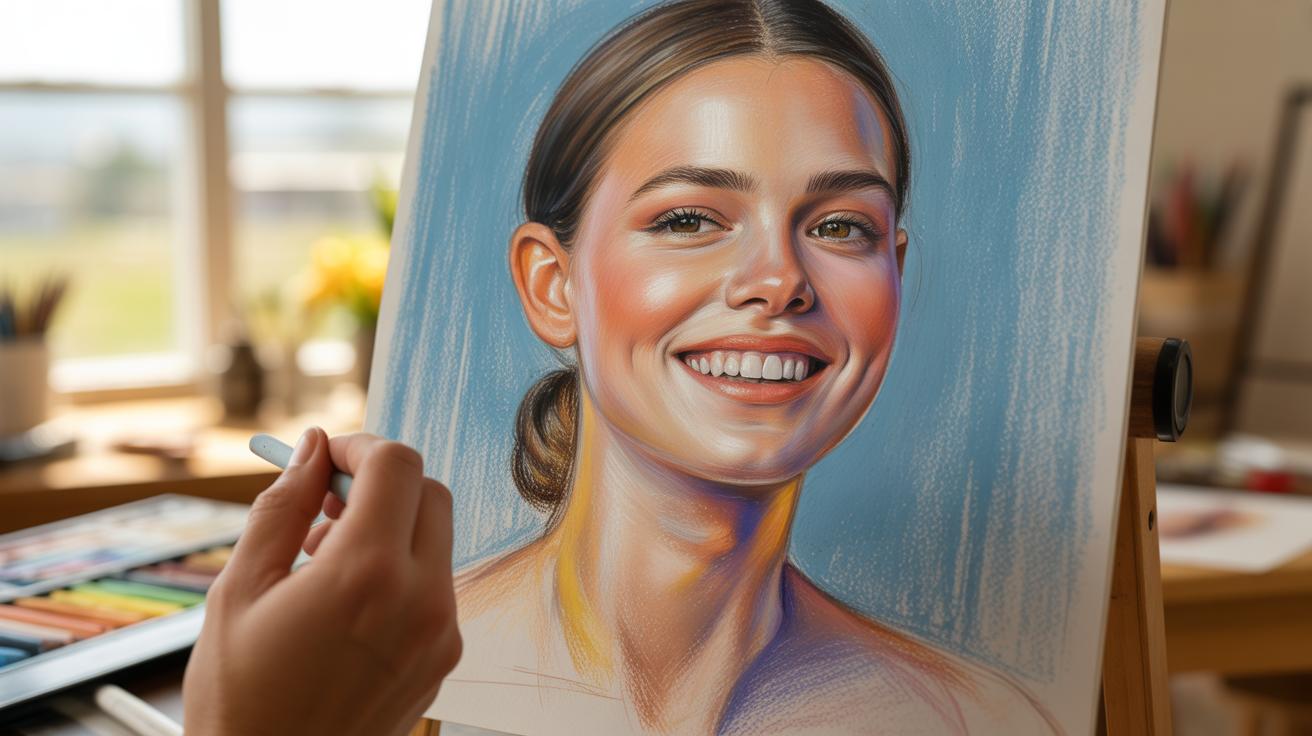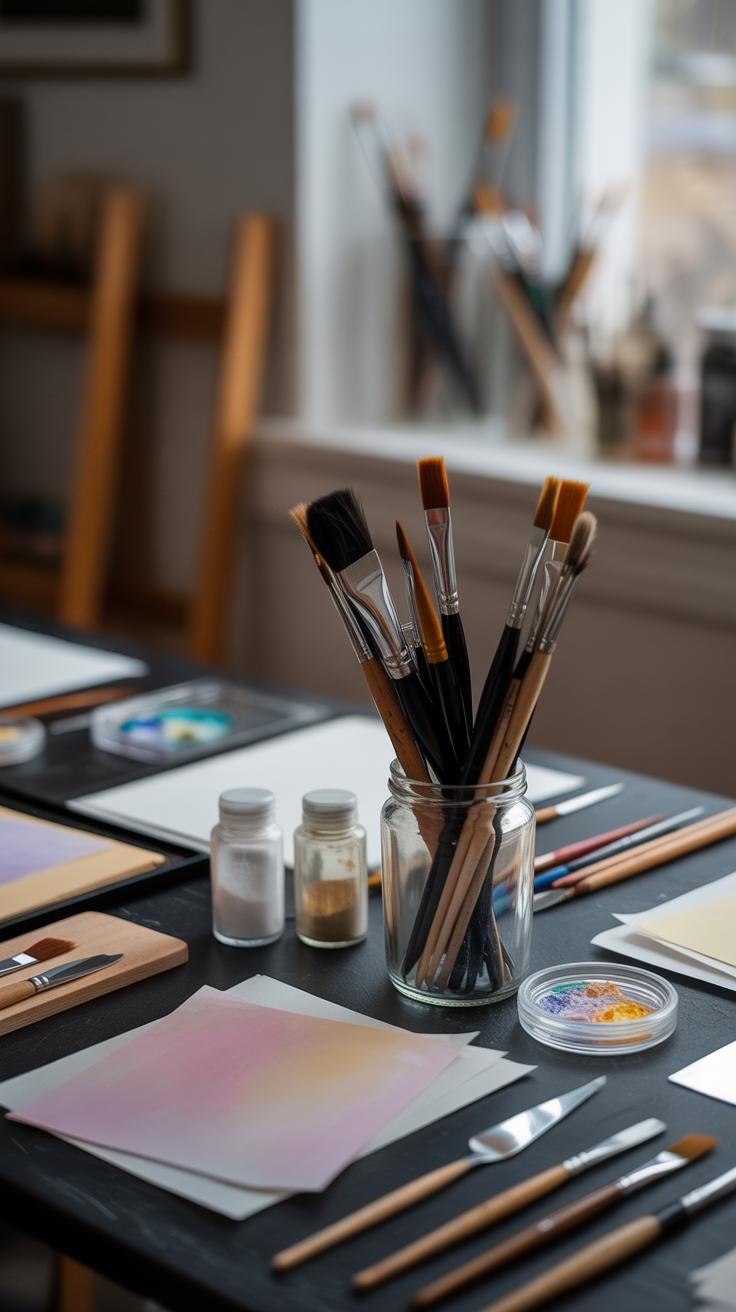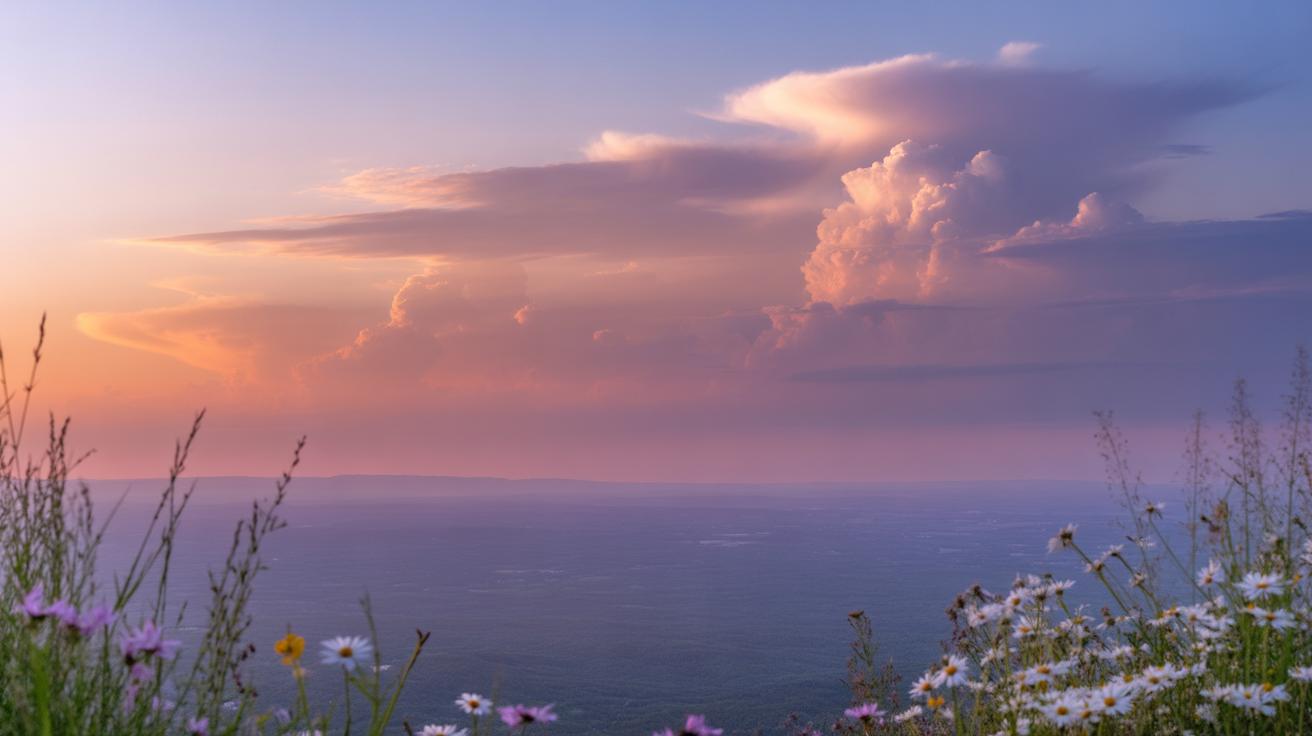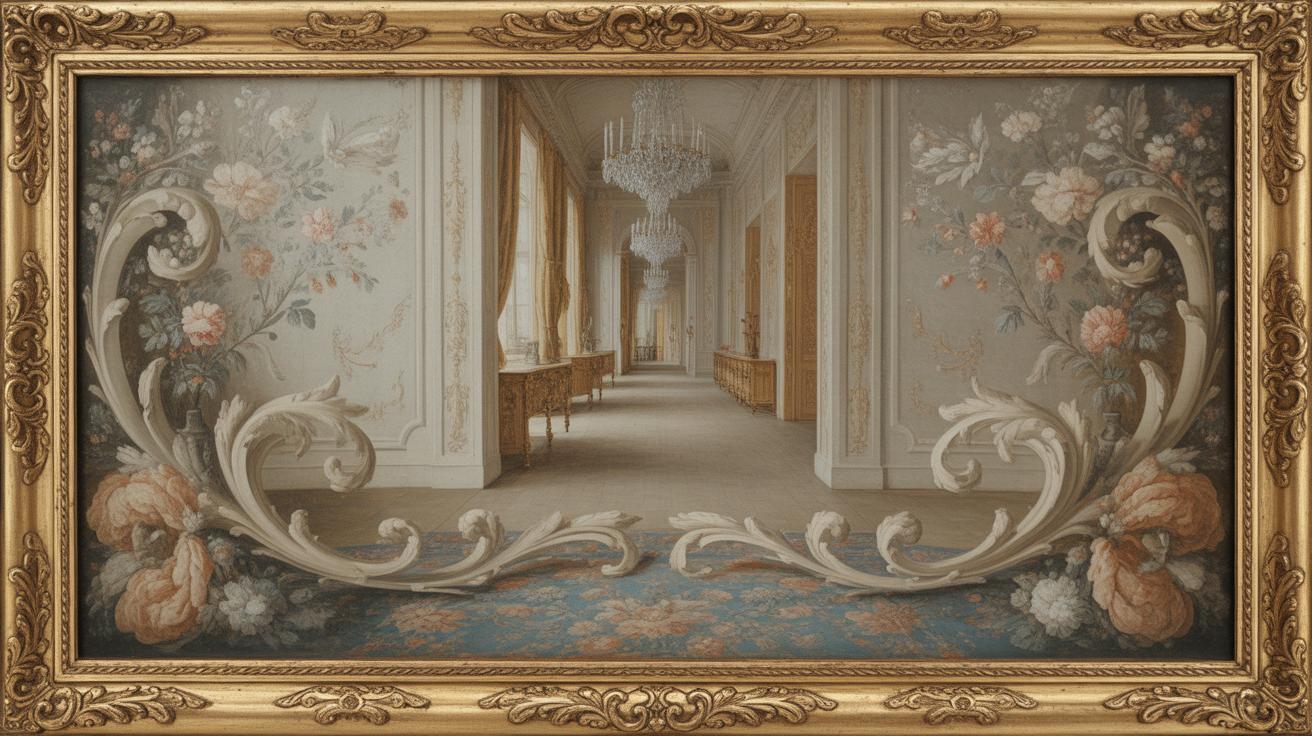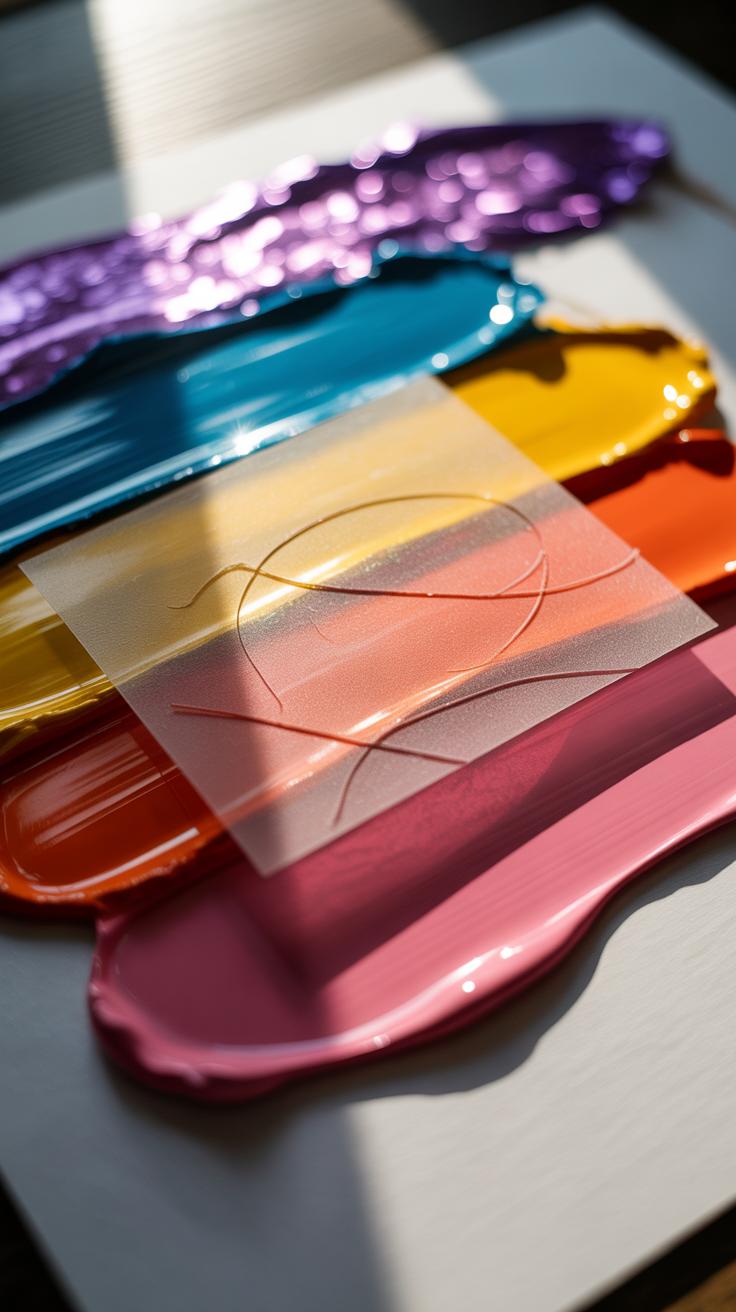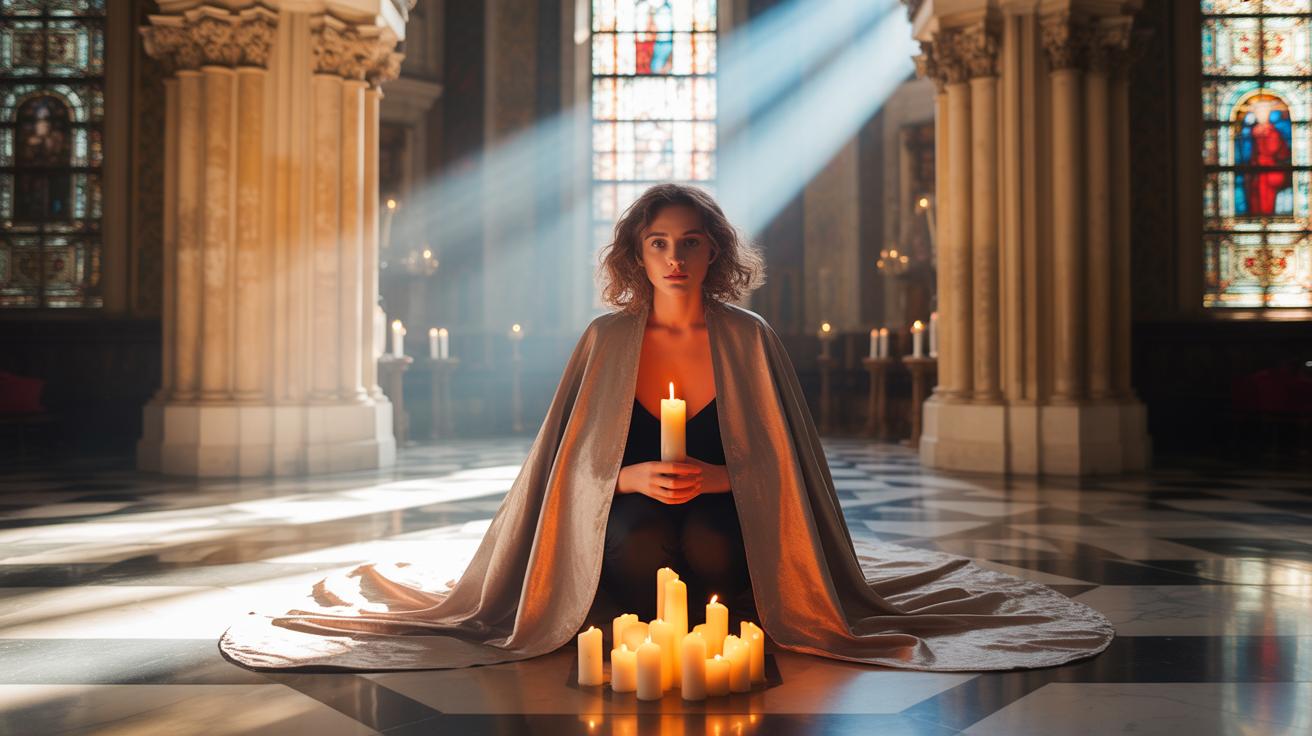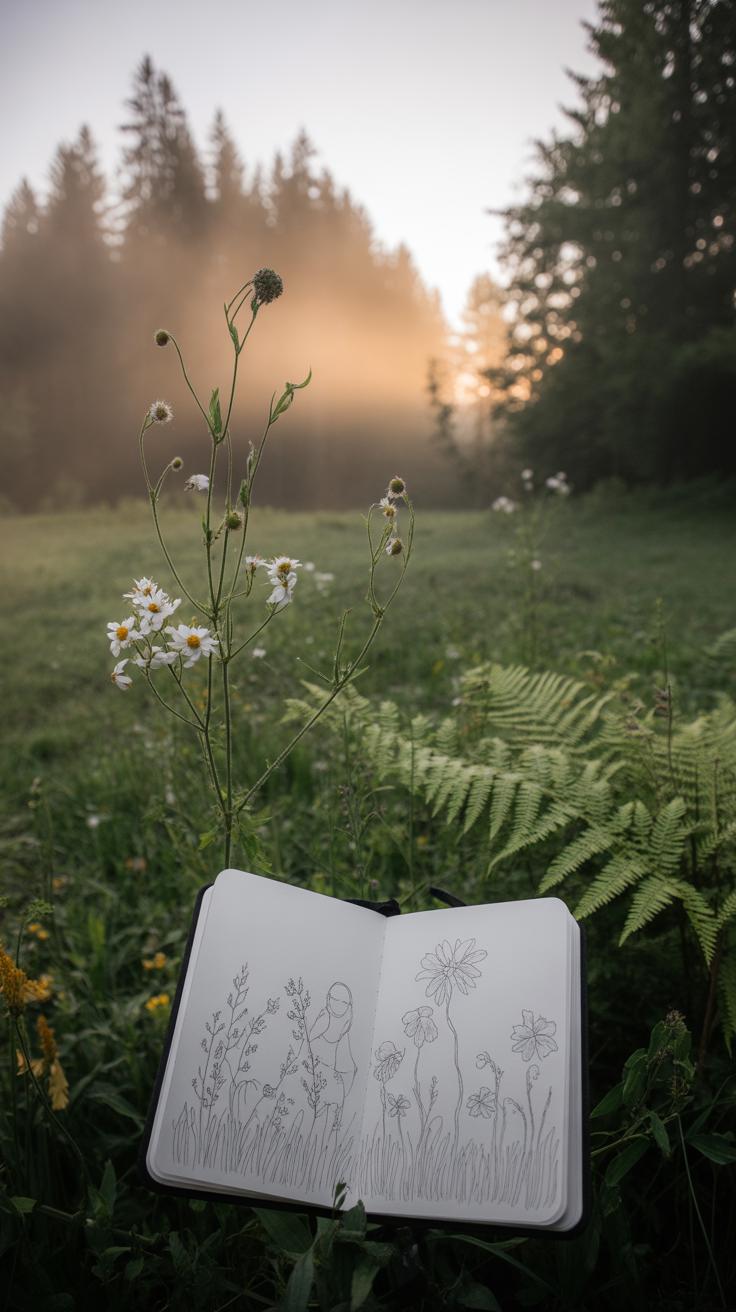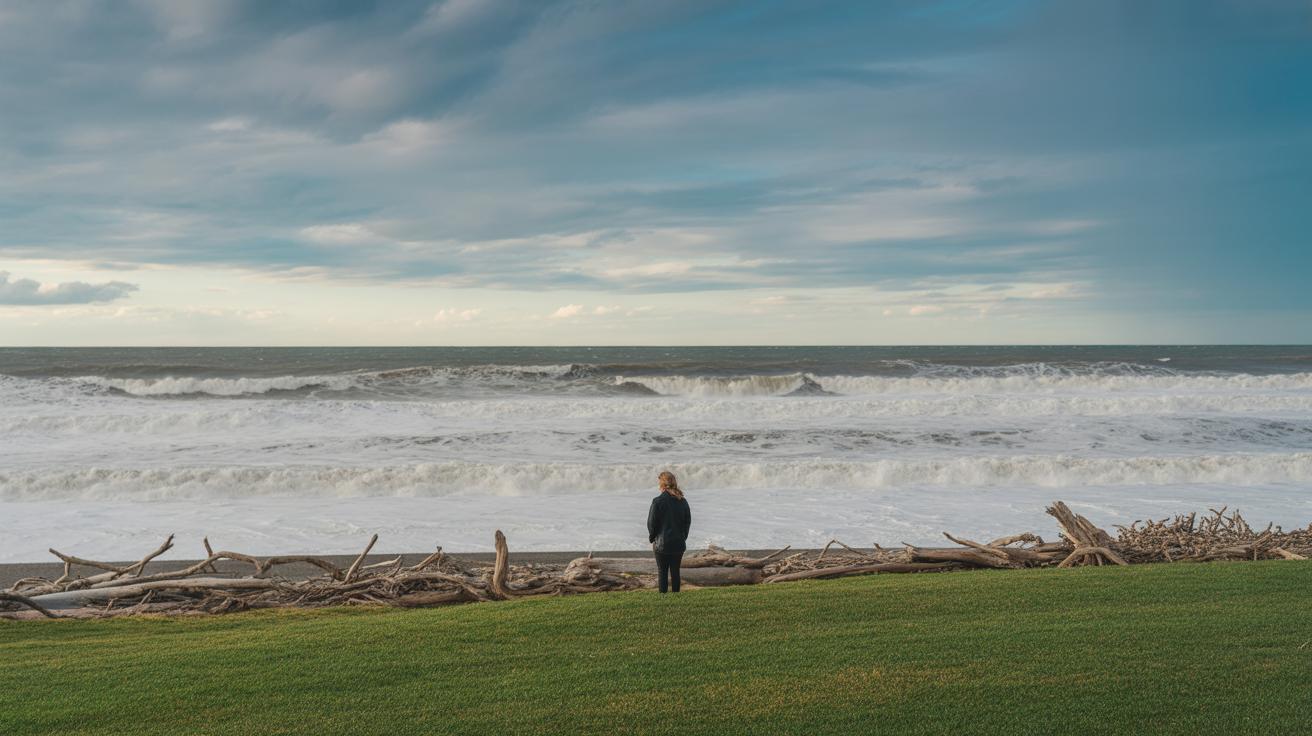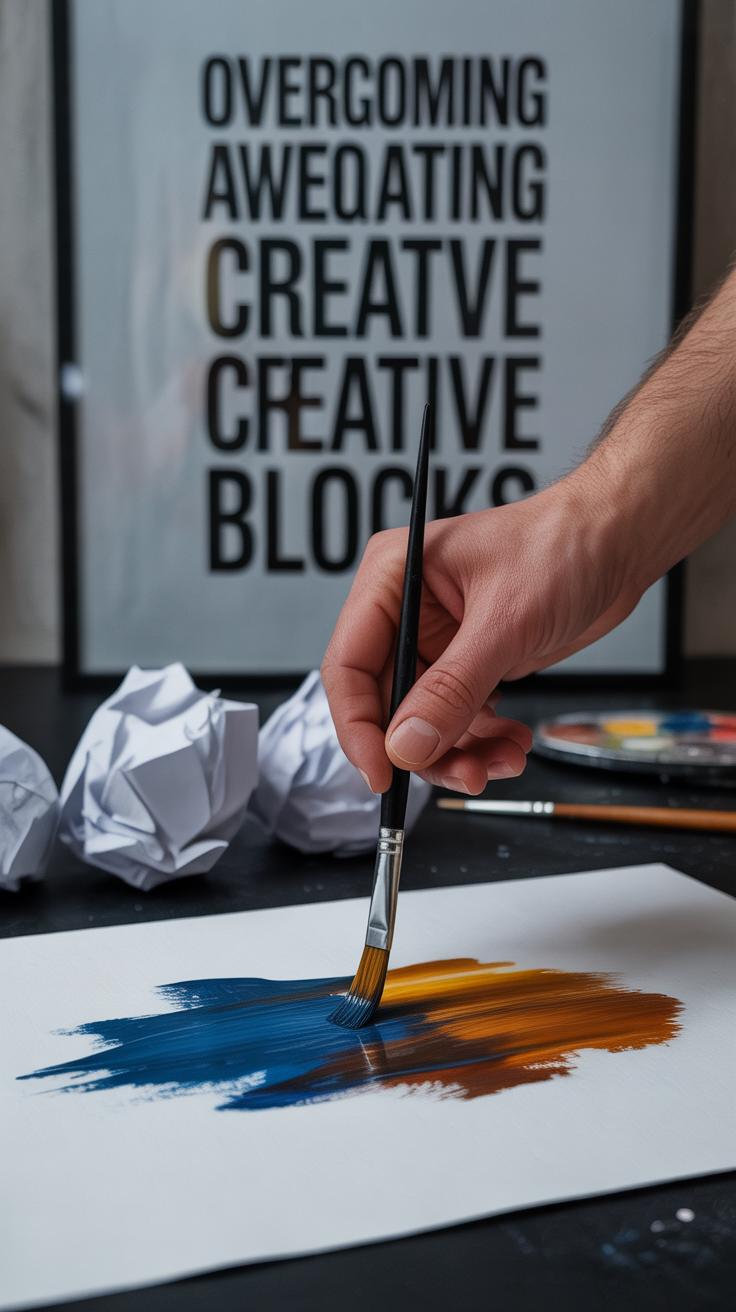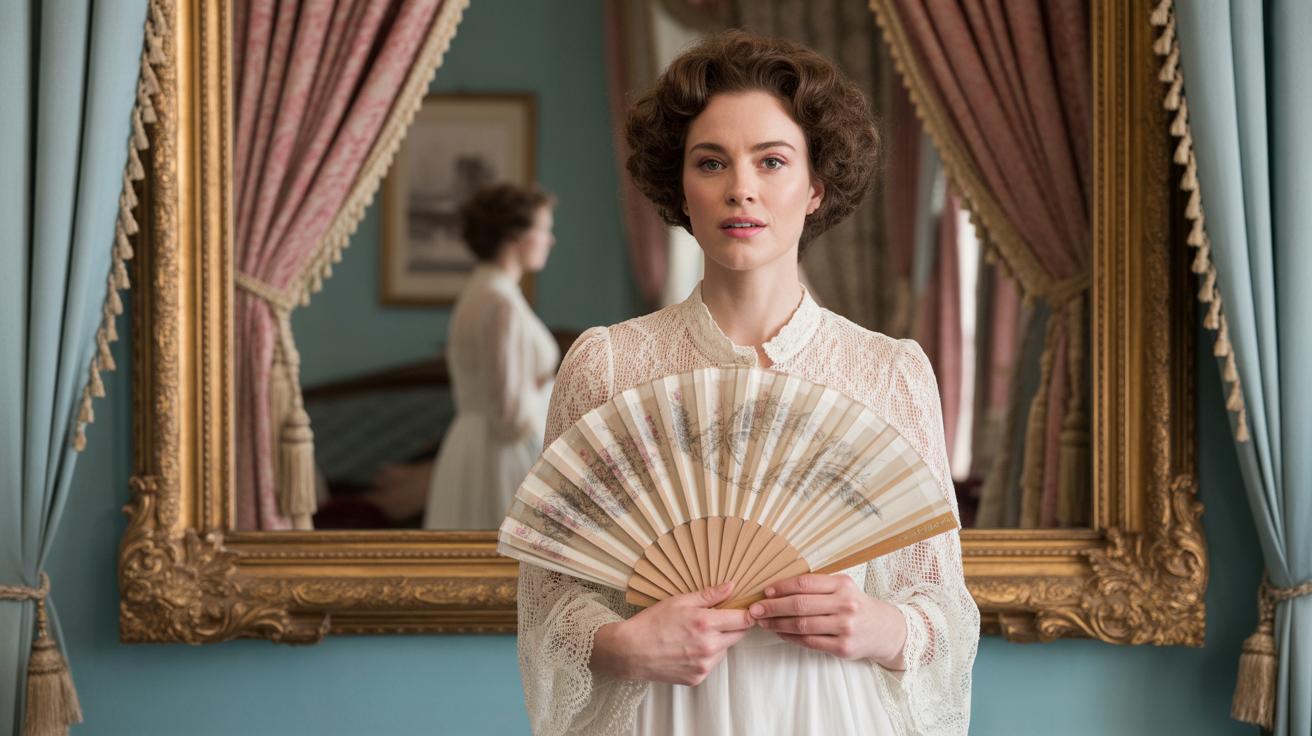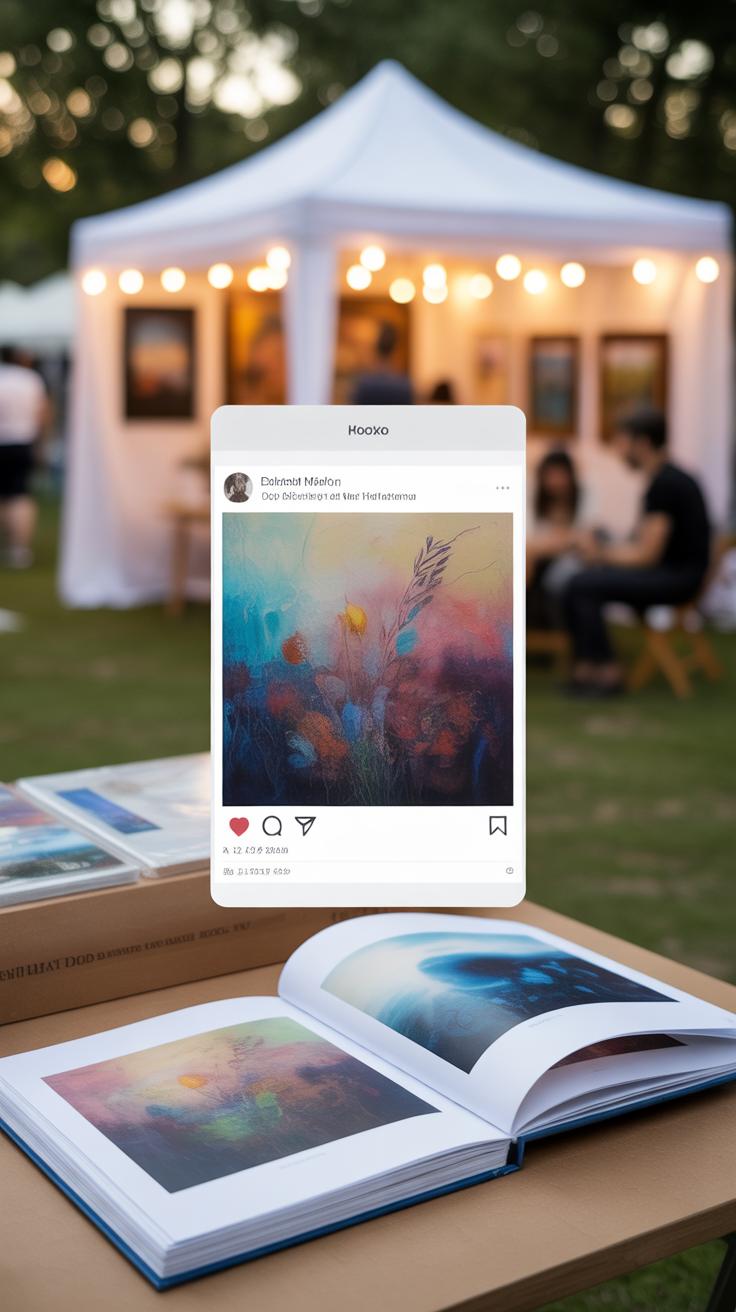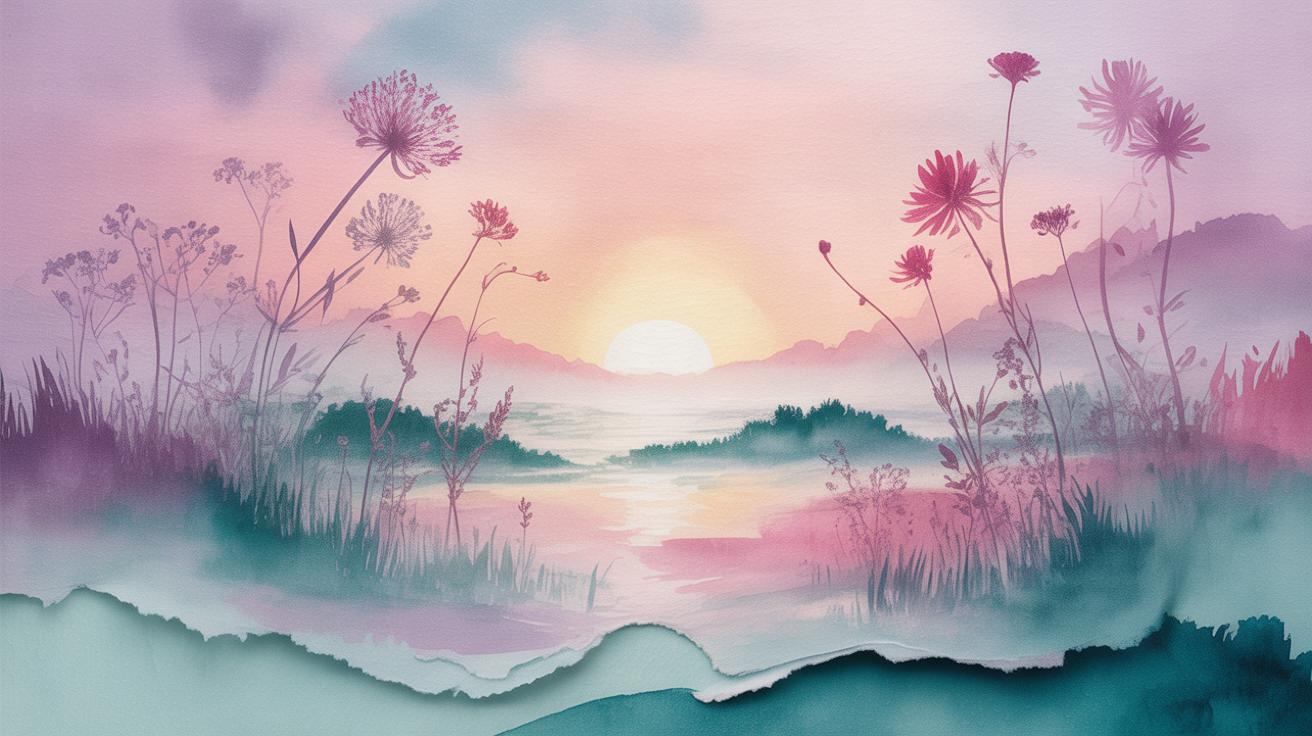
Misty Dreamscapes Exploring Ethereal Art With Delicate Mixed Media
Introduction
Step into a world where art feels like a soft dream. Misty Dreamscapes Exploring Ethereal Art With Delicate Mixed Media opens a door to a gentle and light form of art that moves your imagination. This style uses many materials and soft colors to create scenes that seem to float and glow.
You will learn how artists combine paint, papers, and other items to make this magical effect. We will explore the history, techniques, tools, and ideas behind ethereal art. Whether you want to learn to create your own dreamlike art or just enjoy looking at it, this journey will give you new ways to see and feel art.
Discovering Ethereal Art
Ethereal art feels different from most other styles you might encounter. It’s not about precise details or harsh contrasts. Instead, it captures a sense of lightness — almost like a whisper — and a kind of intangible spirit, as if the artwork could vanish or shift with a touch. You can sense softness in the colors and forms, but also something that feels beyond the physical.
Many works in this style invite you into a space where boundaries blur. Shapes might float, edges fade, and light behaves more like a presence than just something to illuminate. This makes ethereal art feel delicate, but not fragile in a weak way. It often connects with deeper moods or fleeting moments. For you, it might evoke a quiet memory, a daydream, or a mood that’s hard to pin down.
The Meaning Behind Ethereal Art
What stands out most in ethereal art is its ability to suggest rather than declare. The feeling is usually gentle, often dreamlike. This softness isn’t about being sweet or sentimental, but more about creating an atmosphere where the viewer feels invited rather than overwhelmed.
It’s a style that stirs emotions quietly. You might find yourself pausing to notice subtle shifts in light, or wondering what’s just out of frame. Some viewers say they sense a spirit or a fleeting presence in ethereal pieces. That’s probably why this art can feel personal, even intimate, without showing much detail.
When you look at ethereal art, you might realize it connects on a level beyond words. It seems to understand calm, fragility, or moments between moments—those invisible spaces we rarely pay attention to. So, it’s less about what’s shown and more about what’s felt.
The History and Roots of Ethereal Art
Ethereal art didn’t just spring up out of nowhere. You can trace its ideas back to the late 19th and early 20th centuries, when artists started focusing on dreamlike scenes and subtle atmospheres. Think about painters like Odilon Redon or James McNeill Whistler. They moved toward softness, fading outlines, and muted tones that hinted at mysticism or inner worlds.
The Symbolist and Impressionist movements contributed too, each in their own way. Symbolists emphasized emotion and imagination rather than direct representation. Impressionists, on the other hand, captured shifting light and fleeting moments, often using loose brushwork that gave a sense of airiness.
Though not always labeled “ethereal,” these works laid the ground for what we now see as ethereal art: a style focused on evoking rather than delineating. It’s curious how this subtle approach kept evolving. Some contemporary artists pick up this thread, blending it with new media or exploring it through delicate mixed materials, which might surprise you.
Understanding Mixed Media in Art
What is Mixed Media Art and Why Artists Choose It?
Mixed media art combines different materials and techniques in one piece. It’s not just paint on canvas. Instead, you might see paper, fabric, ink, or even small objects all working together. Artists often turn to this approach because it opens up fresh ways to express ideas. When one material feels limiting or too flat, another can bring depth or a contrasting texture.
Sometimes, artists want to surprise themselves—or their audience—by mixing unexpected things. You might find a rough fabric paired with delicate watercolor. This contrast can create tension or harmony, depending on how it’s done. It’s less about perfect blending and more about the conversation between materials.
Common Materials in Mixed Media
Many materials make their way into mixed media works. Here are a few frequently seen ones:
- Paints: Acrylics and watercolors dominate, but oils or inks find their place too.
- Paper: Scrapbook paper, newspaper clippings, tissue paper—all add layers or patterns.
- Fabrics: Lace, burlap, silk—these bring tactile surfaces and sometimes a hint of softness or roughness.
- Found Objects: Small items like buttons, leaves, or ticket stubs introduce unexpected details.
These materials don’t just sit side by side; they interact. The texture of paper under acrylic paint might change how the color looks. A rough fabric can splash shadows or highlights differently. It’s like a puzzle—each piece affects the whole.
How Mixed Media Enhances Ethereal Art
When it comes to ethereal art, mixed media can push the floating, delicate feeling even further. Layers build subtle shadows and highlights that mimic light playing on mist or fragile wings. Adding translucent papers or gauzy fabrics can replicate a sense of airiness, making parts of the piece almost vanish into the background.
Sometimes, artists use gloss mediums or resin to give areas a smooth, glasslike sheen, strengthening the contrast with softer textures. Or they might embed tiny objects to catch the eye unexpectedly. These choices create a lively surface that invites touch, even if only imagined.
Has it ever struck you how a simple variation in material can shift your entire feeling about an artwork? That’s the quiet magic mixed media offers to ethereal creations. It’s not just about appearance, but about experiencing the work with more senses, even if visually alone.
Tools You Need for Ethereal Mixed Media
When starting with ethereal mixed media, your choice of tools can shape the softness and lightness you aim to capture. It’s not just about grabbing any brush or glue; it’s about tools that complement delicate layering and subtle textures.
Choosing the Right Brushes and Paints
Soft, round brushes often work better than stiff, flat ones. Think of sable or synthetic blends that hold just enough paint but don’t overload your surface. They help you create those faint washes and gentle strokes that give ethereal art its quiet mood. For paints, watercolors and diluted acrylics stand out because they flow and blend nicely without harsh edges. Sometimes, using dry brushing with acrylics can add interesting textures without being too bold. Oil paints generally aren’t the first choice here—you risk losing the fragile feel you want. I’ve found that less is more with color too; pale shades or even near-transparent layers tend to work best.
Adhesives and Application Tools
Choosing the right glue matters more than you might expect. A matte, acid-free glue stick or glue designed for paper often preserves that lightness without darkening or wrinkling. Liquid glues can be tricky; sometimes they leave a wet patch or change the transparency of delicate papers. I prefer using gel mediums—they provide control and dry clear, maintaining the softness and intricate details of layers. Small brushes or even silicone spatulas help apply glue softly, avoiding heavy buildup. Taping with washi or low-tack tape during layering can also help position pieces without damaging fragile materials. The goal is to hold things together without suffocating the airy look you want to keep.
Basic Techniques to Start Creating
Layering Colors and Materials
When you start working with ethereal mixed media, layering is where much of the magic begins. The trick is to apply colors and materials gently. Think of each layer as a whisper, not a shout. Light washes of paint, tissue papers, or delicate fabrics come first. Then, you add slightly more solid layers on top, but still soft enough that the earlier ones peek through.
You might try using watered-down acrylics or translucent papers, building up subtle depth without heavy buildup. Sometimes I find that waiting between layers for drying helps keep the softness intact. But other times, blending while still wet creates this lovely, unexpected transition. It depends on the mood you want—do you want something hazy or letting small details come through?
Don’t overlook textures, either. Thin gauzes, light gel mediums, or even powdered pigments swept lightly can bring interest without taking over. It’s about balance, but that balance feels different every time you try.
Blending for a Dreamy Look
Blending is where colors and textures mingle to create that misty, glowing effect common in ethereal art. You can use soft brushes, sponges, or even your fingers—yes, fingers work surprisingly well for gentle transitions. The goal is to smooth edges between layers, so nothing feels too harsh or disconnected.
Try blending wet paints directly on your surface for a seamless look. Or layer dry pigments over paint and then softly rub or brush them into each other. Sometimes flicking water or misting the piece lightly before blending can soften things even more, almost like your scene is emerging from fog.
It’s tempting to overblend, but sometimes imperfection adds charm. Let some colors hold their edges or textures peek through unpredictably. That sparseness—or inconsistency—can make your piece feel alive, like a fleeting moment you just caught.
Advanced Techniques to Enhance Your Art
Light and shadow can quietly change how your ethereal art feels. Rather than bold contrasts, think soft glows and faint shadows that suggest depth without stealing focus. You might try gently brushing light tones or using delicate washes to mimic diffused light. In one of my pieces, adding a faint halo around a figure made the scene feel less grounded, almost suspended in time. It’s subtle work—too much, and the effect disappears; too little, and it goes unnoticed. Finding that balance may take a few tries.
Incorporating natural elements invites texture and surprise. Pressed petals, tiny leaves, or even fragments of bark can fuse physical reality with dreamlike visuals. Sometimes, these bits embed into the surface, catching light differently or creating unexpected shadows. I recall layering small dried flowers beneath translucent papers to achieve an earthy complexity. You don’t have to use whole leaves; even tiny veins or frayed edges add interest. It’s a bit like collaborating with nature, letting it inform your textures.
Mixed textures open another door. Combining smooth paint with rough paper, or soft fabric with dried organic material, produces contrasts that feel tactile and alive. Experimentation is key—you may find certain materials best evoke that delicate atmosphere you’re after. Does the texture invite touch, or keep the viewer wondering? Both work, depending on your intention. Sometimes, the imperfect pairing of different surfaces is exactly what makes an artwork feel more genuine, less polished.
Finding Inspiration for Your Dreamscapes
Looking at Nature
Nature often offers a quiet kind of inspiration that seeps into ethereal art. Think about soft fog hovering over a field or the gentle sway of willow branches in a light breeze. These subtle scenes provide textures that aren’t harsh or obvious but rather whisper-like—perfect for dreamlike works. You might notice how the muted greens, pale lavenders, or misty blues found in early mornings inspire gentle color palettes that encourage a feeling of calm or mystery. Sometimes, I find myself drawn to the way water ripples or clouds shift, shapes that have no sharp edges, creating that blurred line between reality and imagination.
Try walking slowly, focusing on small details like how light filters through leaves or the feathery softness of moss. These moments can influence texture choices—perhaps layering translucent papers or soft fabric pieces to mimic those effects. It’s not always dramatic, but that subtle beauty can shape your art’s mood profoundly.
Dreams and Imagination as Guides
Dreams can feel like puzzles—sometimes clear, other times foggy or fragmented. Yet, they often hold vivid emotions and strange imagery that stir your creativity. When you pause to reflect on what lingers after waking, that elusive feeling might just become the core of your piece. I’ve noticed that what seems confusing initially can, upon a second look, reveal patterns or moods worth exploring. You don’t need to capture every detail exactly; it’s more about the atmosphere or strange sense of time and space.
Let your feelings guide you rather than logic. If a dream feels joyful, restless, or melancholic, channel that tone through your colors and forms. Imagination also allows you to blend elements that wouldn’t naturally coexist—a floating leaf beside a half-visible figure, for example—breaking limits of the real world. The key is to trust those inner images and emotions, even if they seem unclear. What do you feel when you close your eyes? What shapes stir your curiosity or surprise you? These questions might open new doors in your work that straightforward observation never could.
Common Challenges and How to Overcome Them
Keeping Materials Delicate
Working with fragile papers and light paints in ethereal mixed media can feel like walking a tightrope. A wrong touch or a rushed brushstroke might damage the materials or muddy the soft effects you want to create. One trick I’ve found useful is to handle papers by their edges—this helps avoid unwanted creases or fingerprints. Also, using a light hand whenever you apply paint, almost like you’re brushing away dust, prevents saturation that could otherwise weigh down the ethereal quality.
Some artists swear by layering thin washes of watercolor instead of thick pigments, building softness gradually. Experiment with spray bottles or sponges to apply gentle moisture and avoid blotches. Sometimes, letting layers dry completely before adding more helps maintain clarity. Patience becomes your ally here, even though it can test your impulse to finish quickly.
Avoiding Overcrowding
It’s tempting to pile on textures, colors, and found objects to enliven your dreamscape, but this often backfires. Too many elements can overwhelm the airy feeling you’re aiming for. Ask yourself: does this addition add subtlety or noise? If it feels like noise, it’s probably better left out.
Keeping spaces open in your composition allows lightness to breathe. Limiting your palette to a few harmonious shades helps maintain unity. Try stepping back often during your process; sometimes clutter sneaks in without you noticing. Resist the urge to fix small empty areas with more stuff. Instead, embrace those softer pauses in your work—they can be just as powerful.
In my experience, less sometimes reveals more. What have you found tempting to keep but later realized didn’t belong? Balancing minimalism with expressiveness can feel elusive, but it’s part of the process—don’t rush it.
Sharing and Preserving Your Ethereal Art
Best Ways to Display Your Artwork
When it comes to showing off ethereal mixed media pieces, the display really matters. Framing is one way to protect while also enhancing the fragile beauty of your work. I find that using shadow boxes or deep frames keeps the layers safe without squashing their texture. Clear glass or acrylic covers work well, though sometimes the reflections can distract from subtle details. You might want to try non-reflective glass to soften that issue.
Lighting plays a tricky role. Soft, diffused light tends to bring out the dreamlike qualities without harsh shadows. Natural light is great but fleeting—so if you want consistency, adjustable LED lamps with warm settings make a difference. Sometimes, I’ve seen spotlights create an unexpected glow, yet they can also create unwanted glare. Play around with angles until the light feels right, not too direct but not too dim either.
Preserving Delicate Mixed Media Pieces
Preservation is a balancing act. You want to keep your piece safe from dust, moisture, and fading, but some protective steps might reduce its softness. For example, using archival spray fixatives can help stabilize materials, but overusing them may alter textures or colors slightly—it’s worth testing on scraps first.
Storage should be in a cool, dry place, away from direct sunlight. Acid-free tissue papers are your friend when stacking or wrapping to avoid unwanted creases or discoloration. I’ve heard some artists advocate for climate-controlled frames, which sounds a bit extreme but might suit very delicate works. Still, simple solutions often do the trick if you check on your artworks occasionally.
Sharing your creations is part of the experience, but sending them by mail? Tricky. Packing with bubble wrap and sturdy boxes is standard, but for those especially fragile layers, adding thin foam sheets or cardboard inserts can prevent movement without crushing softness. Experiment and adjust your methods with each piece—what works for one may feel too rigid or loose for another.
Conclusions
You now know that ethereal art creates a soft, dreamlike world using many kinds of materials. This style helps artists show beauty and feelings in a gentle way that invites you in. By mixing paint, paper, and other items, artists make images that seem light and full of light.
If you try some of these techniques, you can make your own dreamscapes. Remember, the key is to be gentle with your materials and let your imagination guide you. With practice, you can bring your own misty dream to life and share your unique vision with others.
